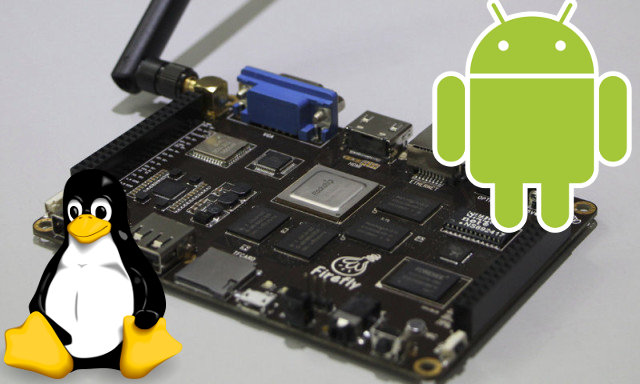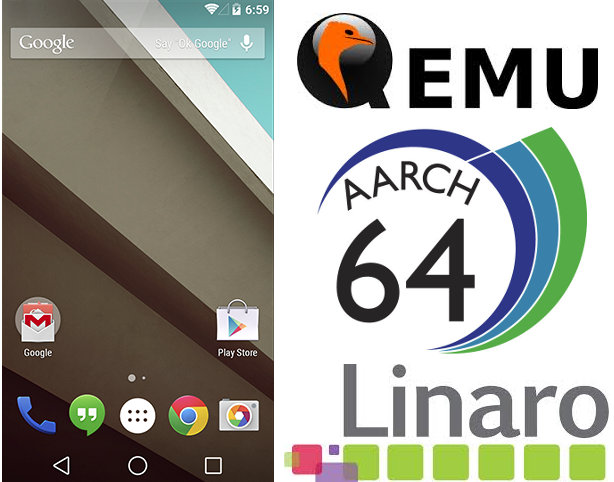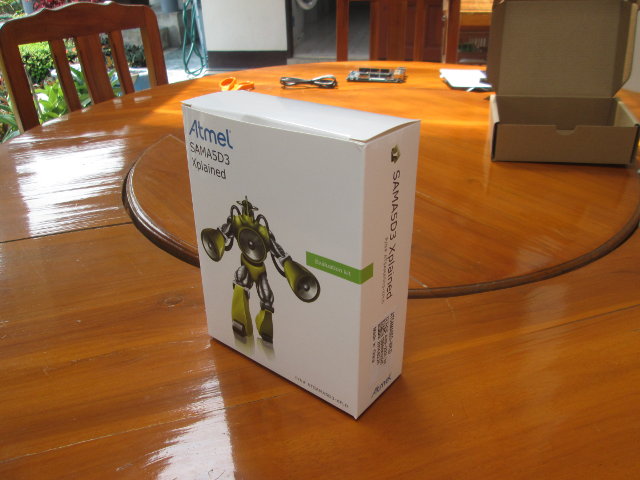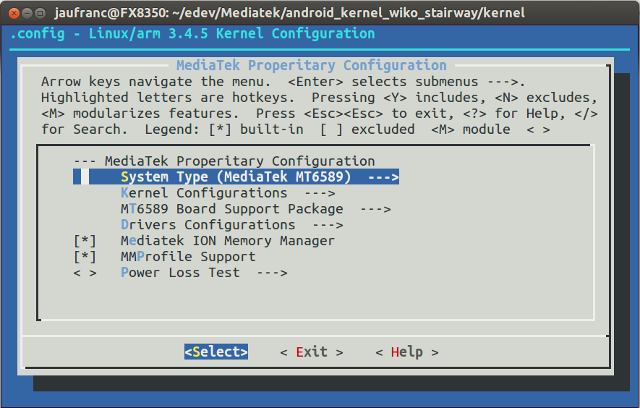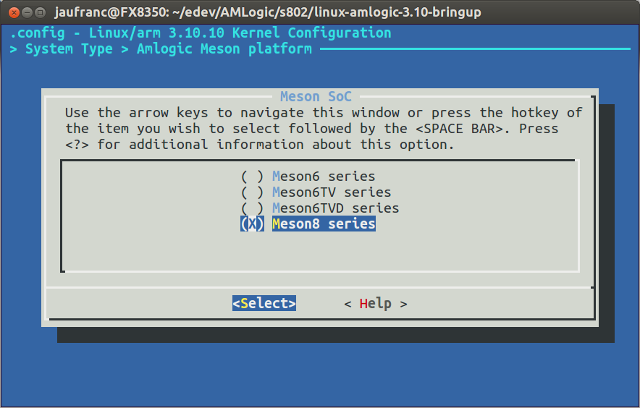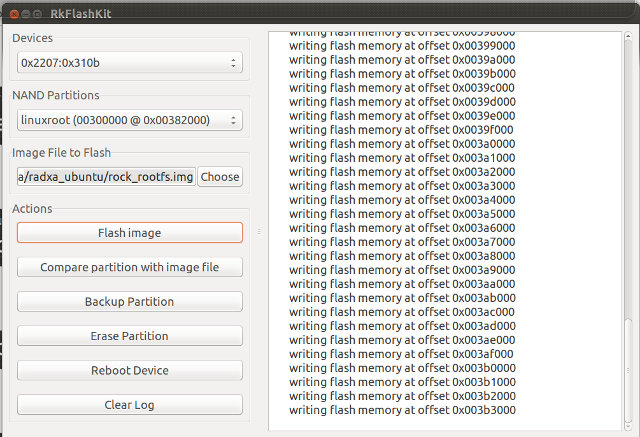Firefly-RK3288 development board was first announced in July. I still don’t have news about availability nor pricing, but the T-Firefly website launched yesterday. They seem do have a nice Wiki, but unfortunately everything is currently in Chinese, except when you go to the download page. You’ll find firmware upgrade_tool for Linux and Windows, the USB drivers for rooting and firmware update, firmware images (Android 4.4.2, Ubuntu 14.04, and dual boot), the board schematics (PDF), and Android KitKat 4.4.2 SDK with U-Boot, Linux, and Android source code, some documentation, XBMC apk (no source) with H.265 hardware decode support for MP4, MOV and MKV container formats. The SDK is available on Bitbucket. I planned to test it, but unfortunately my network connection is very slow (and unstable) to this server, and I failed to retrieve it with git clone. The company also posted the build instructions in Chinese in their website, but […]
How to Build and Run Android L 64-bit ARM in QEMU
[Nov, 2014 Update: The method below does not seem to work anymore, but a 64-bit ARM emulator “emulator64-arm64” has now landed in AOSP, and updated instructions are available here]. Most people can’t afford Juno Cortex A57/A53 development board, and mobile processors based on the latest 64-bit ARM cores are only expected by early 2015. But thanks to a small team at Linaro, you can now build and run Android L 64-bit ARM in the latest version of QEMU that supports Aarch64. Alex Bennée, an engineer working for Linaro, wrote a blog post in Linaro’s Core Dump blog explaining the Android emulator is actually based on QEMU, the differences compared to mainline QEMU, the work they’ve done on Android L at Linaro, and most importantly, provided the basic steps showing how to build and try Android L 64-bit ARM (ARMv8) in QEMU. I’ve just done that, but unfortunately, albeit the builds […]
How to Boot a Headless Linux Image on Amlogic S802 TV Boxes (Tronsmart Vega S89 Elite)
As some of you already know, I’ve been playing around with Tronsmart Vega S89 Elite, an Android TV Box powered by Amlogic S802 quad-core ARM Cortex A9r4 processor at 2 GHz. Today, I’ll show how to boot a headless Linux image on any Amlogic-based S802 TV Box from the network. The instructions can mainly be used as a starting point for developers, as it requires access to a serial terminal via UART, but if you’ve never done it before, the instructions should be easy enough to follow. Everything is loaded from the network, the kernel (via boot.img) is loaded via TFTP, and the rootfs (Linaro ALIP image) is mounted via NFS, so it’s nearly impossible to brick your device using the method provided. Linaro ALIP rootfs comes with LXDE, but at this stage, the desktop environment is not showing, even though my HDMI TV is properly detected by the drivers. […]
Atmel SAMA5D3 Xplained Board Unboxing and Quick Start Guide
Atmel SAMA5D3 Xplained is an evaluation board running Linux powered by SAMA5D36 ARM Cortex A5 micro-processor with 256 MB DDR2, 256 MB flash, two Ethernet ports, 3 USB connectors, and more. This embedded board targets industrial automation, networks, robotics, control panels and wearable applications. The only video output is an LCD connector so it is reserved for headless or flat panel based applications. You can check full specs on my Atmel SAMA5D3 Xplained announcement post. The company kindly sent me a sample, so that I can share my experience with the board. I’ll first post some unboxing pictures, show how to get started with the pre-installed image, and build my own Linux image. The board can be purchased for $79 from Atmel e-Store, as well as several distributors (P/N: ATSAMA5D3-XPLD). Atmel SAMA5D3 Xplained Unboxing I’ve been sent the board via DHL in the following package, which gives a short desscription […]
Mediatek MT6589 Linux Source Code, CyanogenMod 11 Image for Wiko Stairway Smartphone
Mediatek and their customers have still not gotten into the habit of complying with the GPL license, and releasing the relevant source code such as the Linux kernel. There appears to be at least one smartphone, Wiko Stairway, where the Linux kernel has been released, and chrmhoffmann, a members of XDA developers forums, has even released on unofficial CyanogenMod 11 ROM (Android 4.4.2 Kit Kat) for the device. There are three source repositories for the Linux kernel, “android device“, and Android. I’ve only looked into the kernel which is version 3.4.5. Mediatek has apparently messed up the Linux kernel quite a bit, and you’ll have to do some funny things to build the kernel, and all Mediatek options in menuconfig are in a sub-section called “Mediatek Properitary Configuration” (sic.), and it’s not possible to simply go to System Type menu to change the processor type for instance. Let’s get the […]
Amlogic GPL Source Code Release – Kernel 3.10, U-Boot, and Drivers (Wi-Fi, NAND, TVIN, Mali GPU)
Last month, I noticed Amlogic provided links to the Android SDK for S802 / M802 on their open source website, but the only way to get the source was to share your SSH public with Amlogic, so that they give you access. It did not happen, but the company has released the source for Linux 3.10.10, U-boot 2011.03, Realtek and Broadcom Wi-Fi drivers, NAND drivers, “TVIN”drivers, and kernel space GPU drivers for Mali-400 / 450 GPU. There are also some customer board files for Meson 6 only (AML8726-MX / M6) but they do not seem to match the kernel… If you want to build the kernel, including the drivers, you’ll need to download a bunch of files: wget http://openlinux.amlogic.com:8000/download/ARM/kernel/arm-src-kernel-2014-03-06-d5d0557b2b.tar.gz wget http://openlinux.amlogic.com:8000/download/ARM/wifi/rtk8192du-2014-03-06-7f70d95d29.tar.gz wget http://openlinux.amlogic.com:8000/download/ARM/wifi/rtk8192eu-2014-03-06-9766866350.tar.gz wget http://openlinux.amlogic.com:8000/download/ARM/wifi/rtk8192cu-2014-03-06-54bde7d73d.tar.gz wget http://openlinux.amlogic.com:8000/download/ARM/wifi/rtk8188eu-2014-03-06-2462231f02.tar.gz wget http://openlinux.amlogic.com:8000/download/ARM/wifi/brcmap6xxx-2014-03-06-302aca1a31.tar.gz wget http://openlinux.amlogic.com:8000/download/ARM/wifi/wifi-fw-2014-03-06-d3b2263640.tar.gz wget http://openlinux.amlogic.com:8000/download/ARM/modules/aml_tvin-2014-03-06-fb3ba6b1c8.tar.gz wget http://openlinux.amlogic.com:8000/download/ARM/modules/aml_nand-2014-03-06-39095c4296.tar.gz wget http://openlinux.amlogic.com:8000/download/ARM/customer/aml_customer-2014-03-06-76ce689191.tar.gz wget http://openlinux.amlogic.com:8000/download/ARM/gpu/gpu-2014-03-06-0425a1f681.tar.gz You’ll need to extract these tarballs in specific directories:
|
1 2 3 4 5 6 7 8 9 10 11 12 13 14 15 16 17 18 19 20 21 22 23 24 25 26 |
tar xvf arm-src-kernel-2014-03-06-d5d0557b2b.tar.gz mkdir -p hardware/amlogic/ mkdir -p hardware/wifi/realtek/drivers mkdir -p hardware/wifi/broadcom/drivers mkdir -p hardware/arm/ cd hardware/amlogic tar xvf ../../../aml_nand-2014-03-06-39095c4296.tar.gz mv aml_nand-amlogic-nand nand cd ../wifi/realtek/drivers tar xvf ../../../../rtk8192du-2014-03-06-7f70d95d29.tar.gz tar xvf ../../../../rtk8192eu-2014-03-06-9766866350.tar.gz tar xvf ../../../../rtk8192cu-2014-03-06-54bde7d73d.tar.gz tar xvf ../../../../rtk8188eu-2014-03-06-2462231f02.tar.gz mv rtk8188eu-8188eu 8188eu mv rtk8192du-8192du 8192du mv rtk8192cu-8192cu 8192cu mv rtk8192eu-8192eu 8192eu cd ../../broadcom/drivers tar xvf ../../../../brcmap6xxx-2014-03-06-302aca1a31.tar.gz mv brcmap6xxx-ap6xxx ap6xxx cd ../../../arm tar xvf ../../gpu-2014-03-06-0425a1f681.tar.gz mv gpu-r3p2-01rel3 gpu cd .. tar xvf ../../aml_tvin-2014-03-06-fb3ba6b1c8.tar.gz mv aml_tvin-amlogic-3.10-bringup tvin |
You […]
Getting Started with Raxda Rock – How to Generate and Flash Ubuntu Saucy Server and Desktop Images
I’ve already written a guide showing how to build and install Android in Radxa Rock. Today I’m going to build the Linux kernel, generate a Ubuntu server images based latest Ubuntu Linaro server release, flash the image to the NAND flash, and show how to install LXDE or XFCE desktop environment. If you are just interested in installing one of the latest supported images, you can download Android, dual boot (Android/Ubuntu), Ubuntu ALIP, and Router images for Radxa Rock @ http://dl.radxa.com/rock/images/, and skip “build” and “generate” instructions, and just follow the flashing instructions below. All steps in this tutorial will be done in Ubuntu 13.10, and lots of the instructions below follow hwswbits blog and Ubuntu Radxa Wiki. Build the Linux kernel Let’s start by building the Linux kernel. I’m assuming you’ve already install development tools in Ubuntu (e.g. apt-get install build-essentials). You can refer to the list at the beginning […]
LinuxCon North America 2013 Schedule
LinuxCon (North America) 2013 will take place on September 16 – 18, 2013 in New Orleans, LA. The event will be co-located with several other conferences: the Linux Plumbers Conference, the Xen Project User Summit, the OpenDaylight Mini-Summit, the Gluster Workshop 2013, the UEFI Plugfest, the Linux Wireless Summit, the Linux Security Summit, and CloudOpen 2013. LinuxCon consists of 3 days of keynotes, and legal, operations, and developers related sessions as well as tutorials and workshops. There will be around 150 sessions and keynotes during those 3 days. I’ve gone through developer sessions and selected one for each time period. Monday, September 16 10:35 – 11:25 – UEFI and Linux by Kirk Bresniker, HP UEFI has become ubiquitous on the PC client systems and is coming up on servers and ARM-based systems, it is becoming the converged firmware infrastructure. UEFI Secure Boot feature has attracted a lot of attention from […]


